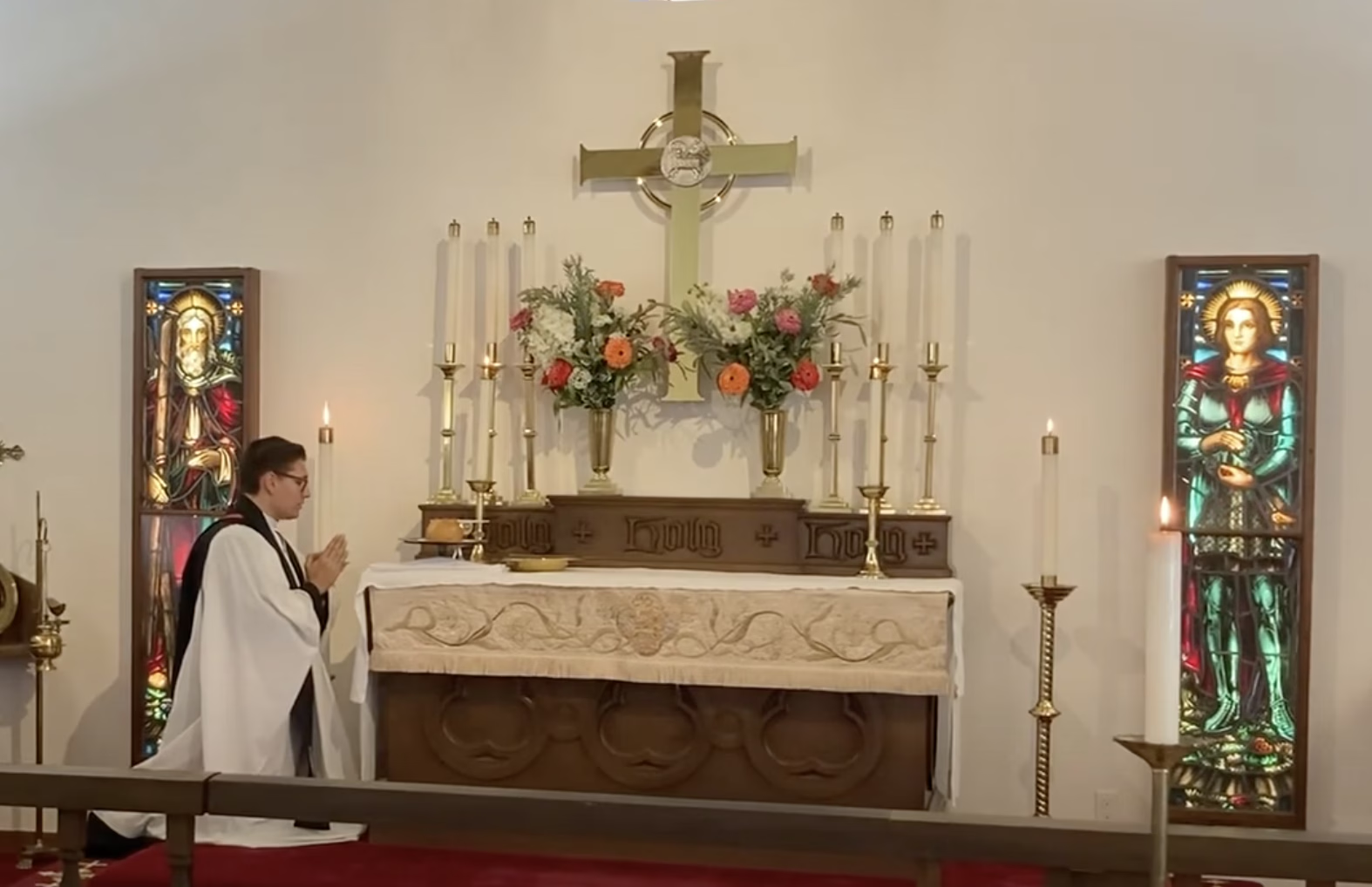The liturgical practice of celebrating Holy Communion at the north side of the altar—often called the “north end” position—is a notable feature of historic Anglican liturgy, especially following the Reformation. This practice has theological, rubrical, and historical roots in the Church of England’s standard use of the 1662 Book of Common Prayer.
The 1662 Book of Common Prayer rubric for Holy Communion says,
“And the Priest standing at the north side of the Table shall say the Lord’s Prayer, with the Collect following, the people kneeling.”
Origins in the Church of England
One original reason for the priest standing at the north side of the Communion table was to help make the service more visible and audible to the congregation. During the Reformation, one of the key goals in reforming the Roman Mass was to ensure that people could “hear” the prayers and “see” the important actions—especially the breaking of bread and the giving of thanks.
When a priest stood facing the east wall of the church (“Ad Orientum” which was traditional in medieval worship), much of what he did—like handling the bread and wine—was hidden from view. In large churches or cathedrals, the sound could also be lost, especially with long choir stalls blocking the way. So Reformers wanted the priest’s actions to be more public and participatory.
To fix this, the Puritans and other Reformers in 16th-century England replaced fixed stone altars with wooden tables, which were often moved to the center of the church or to the front where people could gather around. The priest would then stand on the north side of a long rectangular table, facing across it (not toward the congregation or the altar wall), while celebrating Communion. This setup allowed people to better see and hear what was happening. Later when the tables were rotated and placed back against the Eastern wall (Thanks Abp. Laud), the priest remained on the North end.
Also notable is the use of real leavened bread rather than wafers, and the administration of the wine to the laity—commonly referred to as “communion in both kinds.” As the Thirty-Nine Articles of Religion affirm in Article XXX, “The Cup of the Lord is not to be denied to the Lay-people: for both the parts of the Lord’s Sacrament, by Christ’s ordinance and commandment, ought to be ministered to all Christian men alike.”
The late Rev. Dr. Peter Toon described it this way:
“For reformers who were influenced by the Continental Reformation, the minimal revision envisaged by the 1549 Rite was insufficient. So steps were taken to remove altars and replace them with tables and to put the table in that part of the chancel which the congregation could see. Sometimes the long sides of the table faced north and south and sometimes east and west; and the celebrant stood wherever seemed the best place to be seen and heard.”
Toon, Peter. The Eucharistic Prayer in the Anglican Tradition. Preservation Press, 1994.
Biblical Support for North-end Worship?
One verse sometimes (perhaps anachronistically) applied to this practice is Leviticus 1:11:
“And he shall kill it on the side of the altar northward before the Lord: and the priests, Aaron’s sons, shall sprinkle his blood round about upon the altar.”
The Levitical instruction refers to the location of animal sacrifice in the Tabernacle system, but the north side rubric in the Anglican tradition arose for different theological and ceremonial reasons during the Reformation, particularly to distinguish the Lord’s Supper from the Roman Mass and to emphasize the Table rather than an altar of sacrifice.
This engraving vividly illustrates a theological basis for a Northside Eucharistic celebration as a participation in the heavenly liturgy.
At the top of the image, Christ stands as high priest at the right hand of the Father, surrounded by clouds and angels. He appears in priestly posture, interceding above a heavenly altar, echoing Hebrews 8:1 and Psalm 110:1. Directly below, on earth, a priest celebrates the Eucharist at a north-side position—facing across the altar from the north end, as was common in the 1662 Book of Common Prayer tradition.
Theologically, this visual communicates that the liturgy is not just an human act, but a heavenly drama in which the Church on earth joins the worship of the saints and angels. Sursum Corda! The north-side celebration becomes a visible sign of this mystical union, locating the celebrant in a posture that reflects the divine pattern but with one mediator in heaven.
Dearmer and the North Side
Percy Dearmer writing on the issue says:
“I have, however, now come to the conclusion that he should stand before the north part of the altar, mainly because more recent knowledge has resolved the doubt raised by the Lincoln Judgement, which, in a very thorough statement of the case, declared the eastward position a very thorough statement of the case, declared the eastward position throughout the service to be legal, but left the part of the altar undecided. Archbishop Benson took the following view:– The position of the Holy Table had, in 1662, been lawfully changed, but yet the revisers left the old rubric ‘standing at the north side’, although the Tables now stood altarwise, and had no north side in the sense of the rubric; therefore the words ‘at the north side’ are now ‘impossible of fulfillment in the sense originally intended’ (Lincoln Judgement, p. 44), and for the priest to stand at the northern part of the front ‘can be regarded only as an accommodation of the letter of the Rubric to the present position of the Table’ “
Dearmer, Percy. The Parson’s Handbook: Practical Directions for Parsons and Others According to the Anglican Use. 11th ed., Oxford University Press, 1913.

Leave a ReplyCancel reply